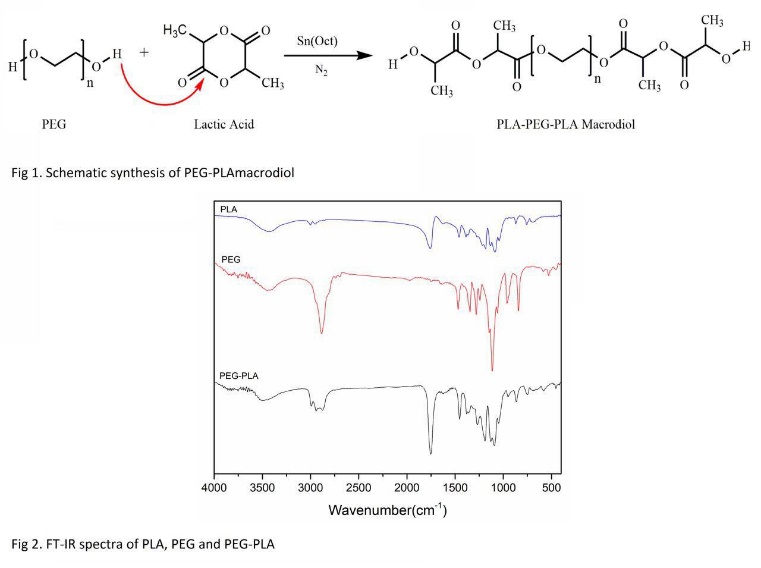Peyman Akbari
Iran Polymer and Petrochemical Institute, Iran
Title: Synthesis of PEG-PLA diol as a new soft segment for biodegradable Urethane products
Biography
Biography: Peyman Akbari
Abstract
Polyurethanes (PUs) are one of the vastly studied synthetic polymers in tissue engineering applications due to their diverse compositions and tunable physiochemical properties. A series of novel poly ethylene glycol/poly lactic acid (PEG-PLA) diols are synthesized. The success of synthesis and the structure of the block copolymers are demonstrated by FT-IR and H NMR analyses. The aim of this study is to develop a series of diols as soft segment for biodegradable urethane products. Making alteration to PEG:PLA ratio results in different degradation rates and mechanical properties of the urethane products. Briefly, PEG was reacted with lactic acid through a ring-opening polymerization using Sn(Oct)2 as catalyst at 180 ℃ under a N2 atmosphere to obtain a PLA-PEG-PLA block copolymer. The produced polymer was then precipitated successively in n-hexane/ethyl acetate solution. It shows the FT-IR spectra of PEG, PLA and PEG-PLA product. The characteristic absorption at 1753 cm-1 (C=O stretching) is observed, demonstrating the formation of ester linkage connecting PEG-PLA components. 1369 cm−1, 1456 cm−1 are respectively attributed to methyl and deformation vibration of C-H. The absorption peak at 2882 cm-1 indicates the presence of the alkyl C-H (stretching) bond in PEG spectra which agrees with the same peak in the PEG-PLA spectra. In conclusion, PEG-PLA block copolymers were prepared successfully. A series of PEG-PLA block copolymers were synthesized by ring opening polymerization of lactic acid and poly ethylene glycol. Copolymers were characterized by nuclear magnetic resonance (NMR) and infrared spectroscopy (IR), which confirmed that those were synthesized successfully. This synthetic diol can be used as soft segment for degradable polyurethane products in tissue engineering.
Image
References
- Ro A J, Huanga S J and Weiss R A (2009) Synthesis and Properties of Random Poly(Lactic Acid)-Based Ionomers. Polymer; 50: 1134-1143.
- Byuna Y, Rodriguezb K and Han J H (2015) Improved Thermal Stability of Polylactic Acid (PLA) Composite Film via PLA-β-Cyclodextrin-Inclusion Complex Systems. International Journal of Biological Macromolecules; 81: 591- 598.
- Diao J P, Wang H X, Chang N N, et al. (2015) PEG-PLA Nanoparticles Facilitate siRNA Knockdown in Adult Zebrafish Heart. Developmental Biology; 406: 196-202.
- Piorkowska E, Kulinski Z, Galeski A, et al. (2006) Plasticization of Semicrystalline Poly(L-Lactide) with Poly (Propylene Glycol). Polymer; 47: 7178-7188.
- Reddy M M, Vivekanandhana S and Misra M (2013) Biobased Plastics and Bionanocomposites: Current Status and Future Opportunities. Progress in Polymer Science; 38: 1653-1689.

